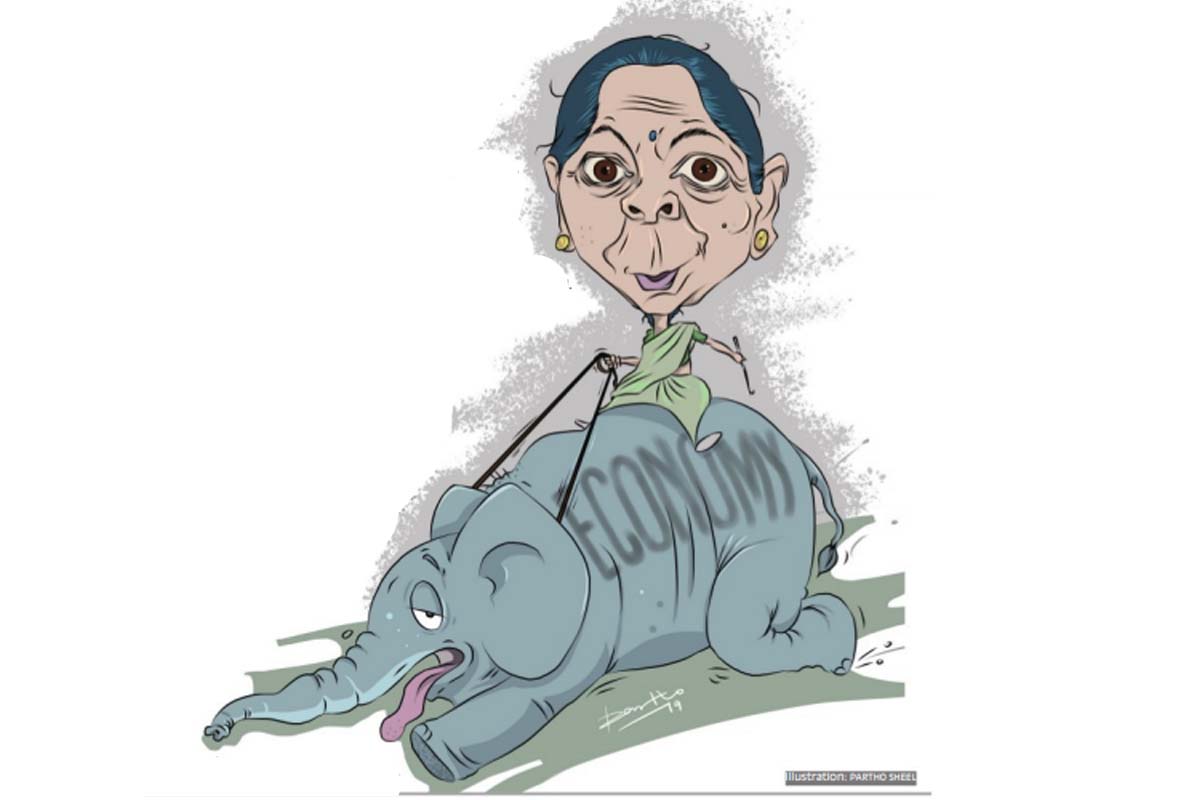Public insights to be foundation of ‘Viksit Delhi’ budget: Delhi CM
Delhi Chief Minister Rekha Gupta on Monday said the upcoming budget will be prepared after incorporating suggestions from various sections of the society.
Over 81 lakh houses with an investment of about Rs 4.83 lakh crore sanctioned of which construction started in about 47 lakh houses.

Illustration: PARTHO SHEEL
In a visionary statement for aspirational India, Finance Minister Nirmala Sitharaman presented the Union Budget for 2019-20, showing confidence that the Indian economy can touch $ 5 trillion level within a few years, offering to involve India Inc. equally in the growth process, and promising to undertake several initiatives to kick-start the cycle of domestic and foreign investment.
Sitharaman, in her maiden Budget, and the first by a woman Finance Minister, thanked tax-payers for their contribution in nation building, and said “Those having annual income up to Rs 5 lakh are not required to pay any income tax”. This includes self-employed as well as small traders, salary earners, and senior citizens, she said. She, however said those in the higher income bracket need to contribute more and announced surcharges on their income. She said there will be an additional imposition of three per cent on those having taxable income from Rs 2 crore to Rs. 5 crore; and seven per cent on those having taxable income of Rs 5 crore and above. Due to slew of efforts taken by the Government, she said the direct tax revenue had significantly increased by over 78 per cent from Rs 6.38 lakh crore in 2013-14 to around Rs 11.37 lakh crore in 2018-19. The direct tax revenue is growing at double digit rate, she said.
Advertisement
Taking advantage of softening of crude prices, she proposed to increase Special Additional Excise duty and Road and Infrastructure cess on petrol and diesel by Rupee one a litre. Announcing relief for the corporate sector, she said phased reduction in rates was continuing. Currently, the lower rate of 25 per cent is applicable to companies having annual turnover up to Rs 250 Crore only. “I propose to widen this to include all companies having annual turnover up to Rs 400 crore. This will cover 99.3 per cent of the companies. Now only 0.7 per cent of companies will remain outside this rate,” she said
Advertisement
She said TDS of 2 per cent will be payable on cash withdrawal exceeding Rs 1 crore in a year from a bank account. She announced a target of Rs. 1,05,000 crore of disinvestment receipts was set for FY 2019-20. An amount of Rs 70,000 crore was proposed to be provided to public sector banks to boost credit.
Announcing interchangeability of PAN and Aadhaar, the Minister said those who don’t have PAN can file tax returns using Aadhaar and that Aadhaar can be used wherever PAN is required. She said pre-filled tax returns with details of incomes and deductions will be made available. She said there was a proposal to consider issuing Aadhaar Card for NRIs with Indian Passports on their arrival without waiting for 180 days. To encourage sale and use of electric vehicles, an additional income tax deduction of Rs 1.5 lakh on interest paid on electric vehicle loans will be allowed. Customs duty has been exempted on certain parts of electric vehicles. To help start-ups grow, capital gains exemptions from sale of residential house for investment in start-ups has been extended till FY 2021. It is also proposed to increase custom duty on gold and other precious metals from 10 per cent to 12.5 per cent, she said. Basic Customs Duty has been increased on cashew kernels, PVC, tiles, auto parts, marble slabs, optical fibre cable and CCTV camera. The Minister announced a Legacy Dispute Resolution Scheme for pre-GST disputes as more than 3.75 lakh crore is blocked in litigations in service tax and excise.
Over 81 lakh houses with an investment of about Rs 4.83 lakh crore sanctioned of which construction started in about 47 lakh houses. Describing connectivity as the life blood of an economy, she unfolded several initiatives for faster growth and improving the competitiveness of domestic goods. The ambitious programme of Bharatmala will help develop national road corridors and highways, she said
Advertisement